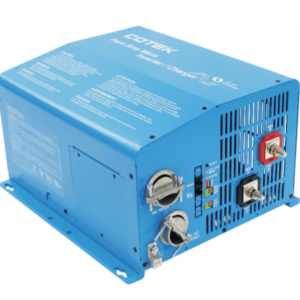Battery Chargers
A battery charger is a device used to put energy into a secondary cell or rechargeable battery by forcing an electric current through it. … A trickle charger provides a relatively small amount of current, only enough to counteract self-discharge of a battery that is idle for a long time.
https://www.definitions.net/definition/battery+charger
A battery charger, or recharger,[1][2] is a device used to put energy into a secondary cell or rechargeable battery by forcing an electric current through it.
The charging protocol (how much voltage or current for how long, and what to do when charging is complete, for instance) depends on the size and type of the battery being charged. Some battery types have high tolerance for overcharging (i.e., continued charging after the battery has been fully charged) and can be recharged by connection to a constant voltage source or a constant current source, depending on battery type. Simple chargers of this type must be manually disconnected at the end of the charge cycle, and some battery types absolutely require, or may use a timer, to cut off charging current at some fixed time, approximately when charging is complete. Other battery types cannot withstand over-charging, being damaged (reduced capacity, reduced lifetime), over heating or even exploding. The charger may have temperature or voltage sensing circuits and a microprocessor controller to safely adjust the charging current and voltage, determine the state of charge, and cut off at the end of charge.
A trickle charger provides a relatively small amount of current, only enough to counteract self-discharge of a battery that is idle for a long time. Some battery types cannot tolerate trickle charging of any kind; attempts to do so may result in damage. Lithium ion battery cells use a chemistry system which does not permit indefinite trickle charging.[3]
Slow battery chargers may take several hours to complete a charge. High-rate chargers may restore most capacity much faster, but high rate chargers can be more than some battery types can tolerate. Such batteries require active monitoring of the battery to protect it from overcharging. Electric vehicles ideally need high-rate chargers. For public access, installation of such chargers and the distribution support for them is an issue in the proposed adoption of electric cars.
https://en.wikipedia.org/wiki/Battery_charger
Photo Link to buy <update link>
https://www.google.com/shopping/product/6587687103293754020?q=xantrex+battery+charger&spell=1&biw=1280&bih=643&prds=epd:10632460270615915702,prmr:3&sa=X&ved=0ahUKEwjsq9Gtsd3kAhVXqJ4KHTg3B8gQ8gIInQM
Showing all 2 results


Recent Comments